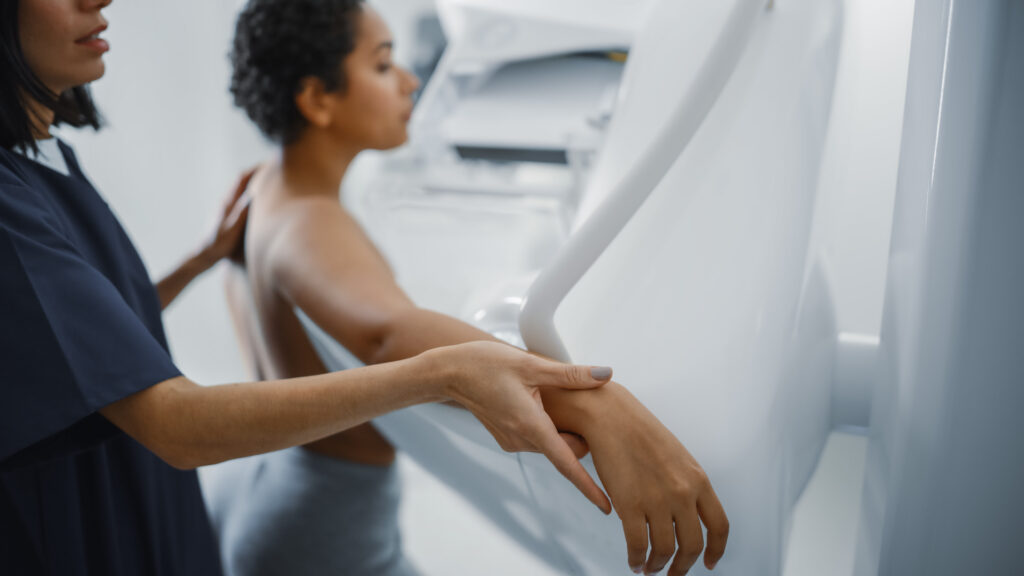Out-of-Pocket Costs Decrease Subsequent Breast Cancer Screenings

A recent study, published in the Journal of the American College of Radiology, found that women who experienced out-of-pocket costs for their first screening mammogram were much less likely to have subsequent breast cancer screenings.
Researchers wanted to know how out-of-pocket expenses for breast cancer screening impacted women and their decisions to continue mammography and related follow-up breast cancer screenings. Out-of-pocket expenses may occur in several situations:
- Insurance plans grandfathered in place before the Affordable Health Act (ACA)
- Mammograms coded as diagnostic
- Mammography not covered by their policy
- Provider out-of-network
- Require additional imaging
Study Details Provide Insight
Linh Tran and his team at Penn State investigated the MarketScan claims data of 73,389 women having their baseline mammography between 2011 and 2014. Among those studied, 69,770 women experienced no out-of-pocket costs. But 3,619 women had to pay out of pocket — meaning about 5% of the women in the study experienced an “out-of-pocket” expense for their baseline mammogram.
The team also discovered that almost 14% of women experienced unexpected out-of-pocket expenses for follow-up testing.
When we extrapolate 5% to the general population of women experiencing their baseline breast cancer screening, we begin to see the impact of out-of-pocket costs. According to Statista, there were approximately 10.2 million women between the ages of 40 and 44 in the U.S. as of July 1, 2020. Potentially, about 2.55 million women are currently eligible each year for their baseline mammogram.
If just 5% of these women face out-of-pocket expenses from their baseline mammograms, potentially 127,500 women could be adversely impacted. Add in the 14% of women who face follow-up testing, and another potential 375,000 women might experience out-of-pocket expenses resulting from their baseline screening mammogram.
The team found that women who experienced an out-of-pocket expense for their baseline mammogram were much less likely to schedule future mammography over the next 12-to-24 months. The Penn State team did see an uptick in scheduling among these women between 24 and 36 months.
Women who experienced out-of-pocket costs for follow-up testing after a baseline mammogram also resulted in lower screening rates over the next 12-to-24 months. Women who had considerably higher co-pays had lower subsequent screening rates even 36 months later.
The average cost that women experienced for their baseline mammogram was $76.62. About 64% of women experiencing out-of-pocket follow-up expenses within three months of baseline saw out-of-pocket expenses averaging more than $195. The researchers found that for each $100 increase in co-pay costs, women were two percent less likely to schedule follow-up breast cancer screenings.
Another study, published in JAMA Network Open in August, confirmed that out-of-pocket expenses related to breast cancer screening have risen since 2010. Cost-sharing was 0% in 2010 but rose by 2017, roughly 7.5% for women who had a mammogram and ultrasound and almost doubled for women who needed a biopsy. This study was led by radiologist Dr. Kathryn Lowry of Seattle Cancer Alliance. She and her colleagues concluded that out-of-pocket spending for additional procedures and imaging after screenings are “common, nontrivial and increasing.”
Removing Barriers for Breast Cancer Screenings
One of the ACA goals was to remove patient cost-sharing for screening/preventative care. Yet, women who have privately sourced or employer-based health insurance face ever-increasing cost-sharing amounts.
Health insurance plans need to recognize that cancer screening may necessitate more testing and eliminate the financial barriers that prevent patients from completing their screenings. State-by-state legislative changes may be needed to lower or eliminate cost-sharing expenses to help facilitate adherence to recommended screening schedules.
Tran and his researchers are also investigating how dense breast notification laws influence follow-up testing and related out-of-pocket expenditures.